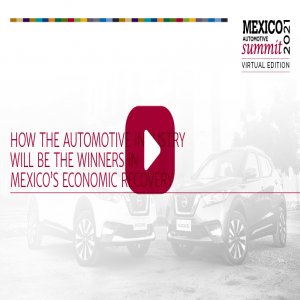
Challenges and Opportunities in a New NAFTA Landscape
US Secretary of Commerce Wilbur Ross is making a mistake by citingdata from 2011 in the ongoing NAFTA renegotiations, said Eduardo Solís in Mexico City on Wednesday. “It is not understandable that the US is basing its strategy for the coming 20 years on figures that do not match reality,” said Solís, Executive President of the Mexican auto industry association AMIA. “We are talking about news or ‘fake news,’ what is a myth and what is a reality. This is an issue of competitiveness and Mexico enables the region to be competitive.”
Speaking at the opening of the Mexico Automotive Summit 2017 at the Sheraton María Isabel, Solís outlined the work that AMIA is doing as part of the NAFTA renegotiations, the importance of the Mexican automotive industry for both Mexico and the NAFTA region, the future for the rest of the year of the industry and the advantages that NAFTA has delivered to all member countries, Canada, the US and Mexico.
“Before NAFTA, Mexico accounted for 7 percent of the North American vehicle production with 1.8 million units,” Solís said. “In 2016, Mexico produced 20 percent of all vehicles and 3.6 million vehicles.” He underlined that the industry contributed 3.3 percent of Mexico’s total GDP and 18.3 percent of the country’s manufacturing GDP. Mexico, he said, is the seventh-largest manufacturer of vehicles globally and has been for the last three years. The industry is also a top generator of foreign reserves. Mexico is the fourth-largest light-vehicle exporter, fifth-largest automotive exporter and the top supplier to the US. “Mexican manufacturing plants are renowned for being the most productive and competitive,” he said.
After a difficult start to the year, the Mexican automotive industry is recovering. “Mexico has a very significant growth outlook for the rest of 2017,” Solís said. “AMIA estimates growth of 3.8 percent in the production of light vehicles and a total 5 million vehicles produced in 2017.”
Regarding NAFTA, Solís said the industry needs to understand the position of both Mexico and its trade partners. North America has experienced 27.7 percent growth thanks to NAFTA, he said. “About two-thirds of this growth took place in Mexico,” he said. “The US received about one-third and Canada a tiny part.”
He added that the topic of competitiveness must be addressed during the negotiations. “Mexico enables the region to be competitive,” he said. “We are the main supplier of auto parts to the US, but the US is at the same time the main supplier for both Mexico and Canada.” He underlined that the US imports more vehicles – 46.6 percent – from the NAFTA region than from Japan, Germany, Korea, China and the UK together. On the other hand, the US also imports 44.9 percent of all the vehicles it produces to the NAFTA region, with Canada being the top recipient. “Mexico is the first buyer of US vehicles and vice versa,” he said. “Do not touch the rules of origin; that is what makes this deal successful. Thanks to NAFTA, the US has grown with Mexico and Canada.”
















